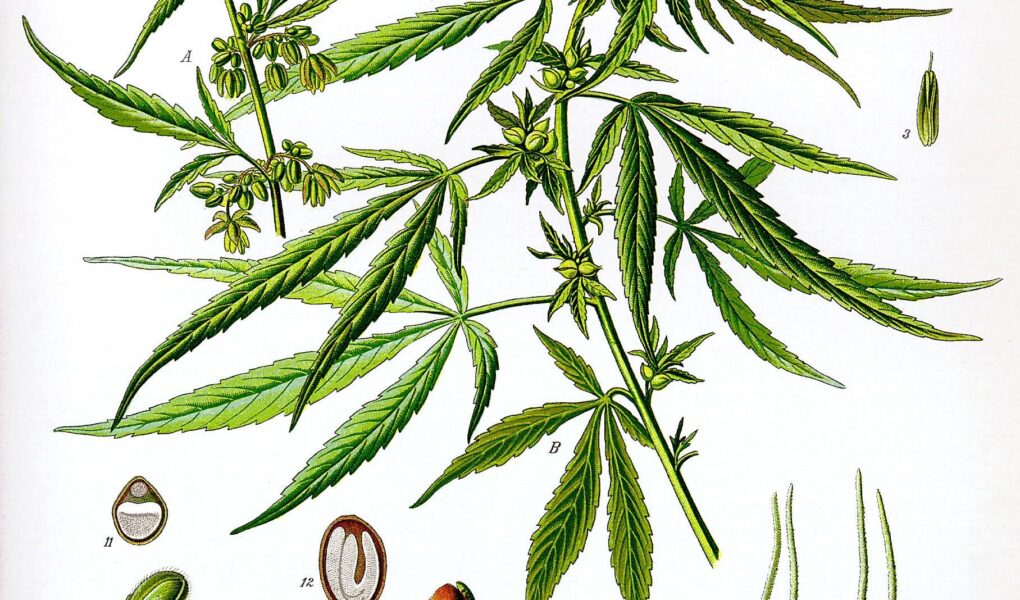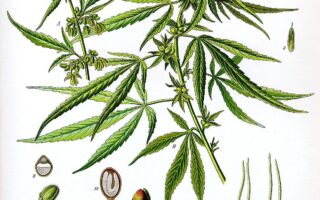Unveiling the Anatomy of Cannabis: A Closer Look at Marijuana Plant Parts
As we journey into the world of cannabis, we unfold a tapestry of botanical wonders that have captivated humans for centuries. The marijuana plant, with its complex structure and multifaceted components, presents not only a source of recreational and medicinal benefits but also a fascinating subject of study for botanists and enthusiasts alike. Each part of the cannabis plant plays a vital role in its growth, development, and unique profile of characteristics. From the intricate green leaves that dance in the sunlight to the flowering buds rich in cannabinoids, understanding the anatomy of this remarkable plant is key to harnessing its potential. Join us as we dissect the various parts of the marijuana plant, unveiling their functions, significance, and the integral roles they play in the broader context of cannabis cultivation and utilization.
Table of Contents
- Exploring the Anatomy of the Marijuana Plant
- Understanding the Role of Leaves in Photosynthesis
- The Significance of Cannabinoids in Bud Development
- Roots and Stems: The Foundation of Healthy Growth
- Q&A
- To Conclude
Exploring the Anatomy of the Marijuana Plant
The marijuana plant is a complex organism composed of several distinct parts, each playing a crucial role in its growth and contribution to the overall efficacy of the plant. Among these, roots anchor the plant, absorbing water and nutrients from the soil. They are often less visible but essential for stability and sustenance. The stem provides structural support, allowing the plant to reach towards the sun while also conducting vital nutrients and water between the roots and leaves. Along the vertical expanse of the stem, nodes emerge where leaves, branches, and flowers develop, showcasing the plant’s capacity for growth and reproduction.
As we move upward, we encounter the leaves, which are integral for photosynthesis, turning sunlight into energy. The flowers, often referred to as buds, are perhaps the most recognized aspect of the marijuana plant, containing the highest concentrations of cannabinoids and terpenes. In addition, trichomes, tiny hair-like structures on the flowers and leaves, play a significant role in protecting the plant and holding these sought-after compounds. Collectively, these components comprise a symbiotic system that allows the marijuana plant to thrive and produce its characteristic effects.
Understanding the Role of Leaves in Photosynthesis
Leaves are the powerhouses of plants, including marijuana, driving the essential process that sustains life on Earth. These remarkable organs are not just for aesthetics; they are the primary sites for photosynthesis, where sunlight, carbon dioxide, and water are converted into glucose and oxygen. The structure of leaves, with their broad surface area and intricate network of veins, allows for optimal sunlight absorption and efficient transport of nutrients. The presence of chlorophyll, the pigment responsible for the green color, plays a crucial role in capturing light energy, highlighting the importance of leaves in energy production within the plant.
The anatomy of a marijuana plant’s leaves reveals several adaptations that enhance their functionality in photosynthesis. Key features include:
- Stomata: Tiny openings on the leaf surface that regulate gas exchange.
- Cuticle: A waxy layer that reduces water loss, ensuring the plant retains moisture.
- Palisade Mesophyll: The layer packed with chloroplasts where most photosynthesis occurs.
- Spongy Mesophyll: A loose tissue that facilitates gas exchange with the stomata.
Understanding these features not only illuminates the role of leaves in photosynthesis but also highlights the adaptability of the marijuana plant to varying environmental conditions. Through the process of photosynthesis, marijuana plants transform sunlight into energy, driving their growth and development. This intricate process ultimately supports the plant’s ability to thrive and produce the desired compounds that many seek for medicinal and recreational purposes.
The Significance of Cannabinoids in Bud Development
The intricate relationship between cannabinoids and bud development plays a pivotal role in shaping the characteristics of marijuana plants. As these compounds metabolize during growth, they contribute significantly to the plant’s overall quality and potency. In particular, the main cannabinoids—Delta-9 THC, CBD, and CBG—act not only as the primary elements responsible for the plant’s psychoactive and therapeutic effects but also influence the formation of trichomes. Trichomes are the tiny, hair-like structures that coat the buds and are essential for protecting the plant while enhancing its aroma and flavor profiles. The developmental stage at which these cannabinoids reach their peak concentration can dictate the moment of harvest for cultivators aiming for specific effects or medicinal benefits.
Understanding how these cannabinoids evolve throughout the plant’s lifecycle is crucial for both growers and consumers. Factors such as light exposure, nutrition, and temperature can drastically alter cannabinoid production, thus affecting the final yield. Here’s a quick overview of some of the key cannabinoids and their significance:
| Cannabinoid | Primary Effects | Role in Bud Development |
|---|---|---|
| THC | Creates psychoactive effects | Enhances trichome density |
| CBD | Offers therapeutic benefits without high | Influences bud structure and stability |
| CBG | Potential anti-inflammatory properties | Precursor to other cannabinoids |
Roots and Stems: The Foundation of Healthy Growth
In the world of cannabis cultivation, roots and stems are pivotal players that set the stage for robust plant growth. The root system serves as the anchor, providing stability while also absorbing essential nutrients and moisture from the soil. Healthy roots not only promote a firm grip on the ground but also facilitate the transport of water and nutrients to all parts of the plant, ensuring successful growth. When nurturing marijuana plants, cultivating healthy root systems is essential, as they form the backbone that helps the plant thrive in a variety of environments.
The stem, often overlooked, plays a critical supportive role, enabling the plant to reach for the light. It provides structural integrity and support for leaves, flowers, and buds, allowing them to grow tall and healthy. Here are a few key functions of stems to consider:
- Transport: The stem transports nutrients and water between roots and leaves.
- Support: It provides a sturdy structure that helps the plant stand tall.
- Storage: Stems can store nutrients, aiding in the plant’s energy needs.
| Function | Roots | Stems |
|---|---|---|
| Absorption | Water and Nutrients | N/A |
| Support | N/A | Holds leaves and buds |
| Storage | Energy reserves | Nutrients |
Q&A
Q&A: Exploring the Parts of a Marijuana Plant
Q1: What are the primary parts of a marijuana plant?
A1: A marijuana plant is composed of several key parts: the roots, stems, leaves, flowers (or buds), and resin. Each part plays a unique role in the plant’s growth and overall health.
Q2: What is the function of the roots in a marijuana plant?
A2: The roots anchor the plant into the soil and are responsible for absorbing water and nutrients. They are essential for overall stability and nourishment, allowing the plant to thrive in its environment.
Q3: How do the stems contribute to the growth of marijuana?
A3: The stems, or stalks, provide structural support for the plant, allowing it to reach toward the light. They also serve as conduits for transporting water and nutrients from the roots to the leaves and flowers.
Q4: What role do the leaves play in a marijuana plant’s life cycle?
A4: Leaves are crucial for photosynthesis, the process by which the plant converts sunlight into energy. The large, serrated leaves capture sunlight and utilize carbon dioxide from the air, producing the energy the plant needs to grow.
Q5: Can you explain the significance of flowers in a marijuana plant?
A5: The flowers, also known as buds, are the reproductive organs of the marijuana plant and are rich in cannabinoids, such as THC and CBD. They are the most sought-after part of the plant, as they contain the compounds responsible for the plant’s psychoactive and therapeutic effects.
Q6: What is resin, and why is it important?
A6: Resin is a sticky substance produced by the flowers and leaves of the marijuana plant. It contains a high concentration of cannabinoids and terpenes, contributing to the plant’s aroma and effects. Resin is often harvested for the production of concentrates and extracts.
Q7: How do different parts of the marijuana plant interact with each other?
A7: The parts of a marijuana plant work in harmony to support its growth. Roots absorb essential nutrients, stems transport them, leaves produce energy through photosynthesis, and flowers form the reproductive aspect while housing cannabinoids. This interconnectedness is vital for the plant’s overall resilience and productivity.
Q8: Are there different varieties of each part of the marijuana plant?
A8: Yes! There are numerous strains of marijuana, each with distinct characteristics. For instance, some varieties produce larger buds, while others may have broader leaves or deeper root systems. These differences can affect the plant’s growth rate, yield, and cannabinoid profile.
Q9: How can the understanding of the plant’s anatomy benefit growers?
A9: By understanding the anatomy of the marijuana plant, growers can optimize their cultivation techniques. Knowledge of how different parts function allows them to tailor their care, from choosing the right soil and nutrients to training the stems and leaves for better light exposure.
Q10: What should novice growers focus on when learning about marijuana plant anatomy?
A10: Novice growers should start with the basics: understanding how to care for roots and soil health, recognizing the signs of healthy leaves, and learning about the flowering cycle. This foundational knowledge can greatly enhance their success in cultivating robust marijuana plants.
To Conclude
As we delve deeper into the intricate world of the marijuana plant, it’s evident that each part, from root to flower, plays a vital role in its growth and development. Understanding these components not only enhances our appreciation of this remarkable plant but also informs a broader conversation about its potential uses and benefits. Whether you’re a seasoned cultivator, a curious enthusiast, or someone looking to expand your knowledge, recognizing the unique characteristics and functions of each part of the marijuana plant paves the way for more mindful and informed engagement. As we close our exploration, remember that every leaf, stem, and bud tells a story—one of nature’s complexity and allure. Embrace the journey, and may your curiosity continue to grow alongside this fascinating plant.



